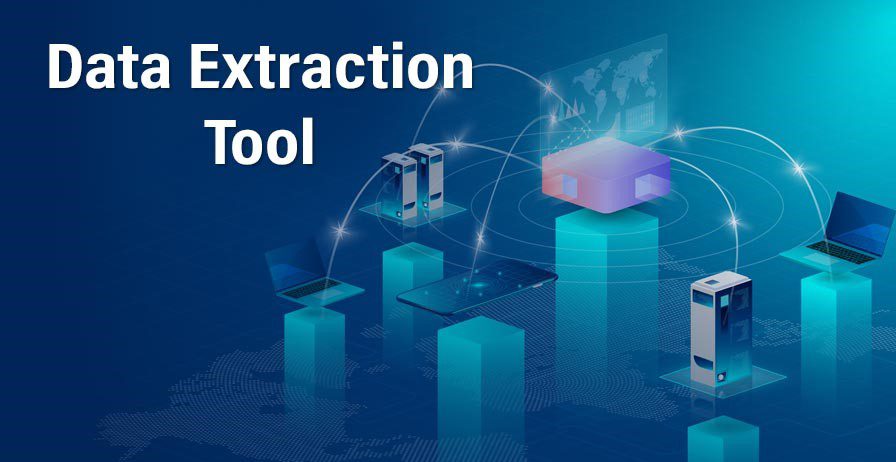Why Your Business Needs a Powerful Data Extraction Tool

Imagine this: Your team is drowning in invoices, contracts, purchase orders, and old scanned PDFs. You hire someone to “clean up” the data, and they spend hours, maybe days, copying line items into a spreadsheet. By the time they finish, half the information is outdated, and mistakes are inevitable.
Welcome to the very real nightmare of document data extraction — a challenge most businesses underestimate until it’s too late.
But what if you could transform this headache into a superpower?
🚀 What Exactly Is Document Data Extraction?
At its core, document data extraction is the process of pulling specific information (names, dates, prices, addresses — you name it) from unstructured or semi-structured documents. These documents can range from scanned receipts to dense legal contracts.
While this sounds simple, the complexity is hidden in the “unstructured” part. Unlike an Excel file with neat columns, real-world documents are messy. They contain varied layouts, tables in unexpected places, and signatures that look like cryptic symbols.
This is where a data extraction tool becomes your best friend.
🤖 Why a Data Extraction Tool Beats Manual Entry (Every. Single. Time.)
Let’s clarify a misconception: a data extraction tool is not just another software to check off in your digital transformation budget. It’s a silent engine that can redefine how your entire business operates.
Here’s why:
1️⃣ Speed & Efficiency — A good data extraction tool can process hundreds of documents in minutes, freeing your team to focus on higher-level tasks.
2️⃣ Accuracy — Humans are prone to errors, especially with repetitive work. Tools leveraging AI or OCR (optical character recognition) achieve accuracy rates that are almost impossible to match manually.
3️⃣ Scalability — As your business grows, so does your data. You won’t need to hire ten more people to handle it; the tool scales automatically.
4️⃣ Compliance & Audit-Readiness — Clean, traceable data makes compliance reporting easier and reduces audit risks — crucial in industries like finance, healthcare, and legal services.
⚡ The Hidden Costs of Ignoring Document Data Extraction
Let’s be blunt: ignoring document data extraction doesn’t just waste time — it costs real money.
💰 Delayed Decisions: When executives have to wait for manually compiled reports, they miss opportunities.
💰 Reputational Risks: Errors in client data can lead to embarrassing (and expensive) mistakes.
💰 Employee Burnout: Repetitive data entry is one of the fastest ways to demotivate smart people.
A data extraction tool doesn’t just “save effort” — it actively prevents these hidden costs.
🌟 From “Data Exhaust” to Business Insights
Here’s a fresh perspective: all those documents? They’re not just admin paperwork — they’re data goldmines.
When properly extracted and structured, they can reveal trends (like which suppliers consistently offer the best terms), identify cash flow bottlenecks, and even uncover new revenue opportunities.
Think of document data extraction as mining. The raw ore (unstructured documents) is worthless until refined. A data extraction tool is the high-tech refinery that transforms raw data into strategic insight.
💡 What to Look for in a Modern Data Extraction Tool
Not all tools are created equal. If you’re evaluating options, here’s what to prioritize:
✅ Multi-format Support — Can it handle PDFs, scanned images, Word docs, emails, etc.?
✅ AI-Powered Flexibility — Static templates are outdated. Choose a tool that learns and adapts to different layouts.
✅ API Access — Your business systems should talk to each other. A good tool offers API integrations for seamless workflows.
✅ Security & Compliance — Especially if you handle sensitive or personal data, encryption and privacy controls are non-negotiable.
🎯 Transforming the Mundane into Magic
The real beauty of document data extraction? It doesn’t just replace manual work — it transforms how your organization thinks about data altogether.
It shifts your team’s mindset from reactive (fixing errors, reconciling figures) to proactive (using insights to grow and innovate).
✨ Final Thought: The Future Is Data-Driven — Will You Lead or Lag?
In 2025 and beyond, the companies that thrive won’t necessarily be the biggest or the loudest — they’ll be the ones who unlock and leverage their data the fastest.
A data extraction tool isn’t a luxury anymore. It’s a foundational piece of your business intelligence puzzle, a bridge between everyday paperwork and strategic foresight.
So next time you see a pile of unprocessed documents, don’t just see a task list. See an opportunity to automate, innovate, and outpace your competition.
🔎 Want to learn more about integrating a data extraction tool into your business? Drop a comment or reach out — your future self will thank you.




